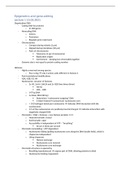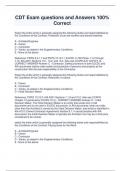College aantekeningen
Summary Epigenetics and Gene Editing
- Instelling
- Rijksuniversiteit Groningen (RuG)
This summary consists of: 1. epigenetic principles underlying gene expression regulation 2. epigenetic inheritance underlying cell type identity 3. differentiation principles, in particular neuronal development 4. genetic and epigenetic editing principles, including CRISPR/Cas platforms 5. cr...
[Meer zien]














